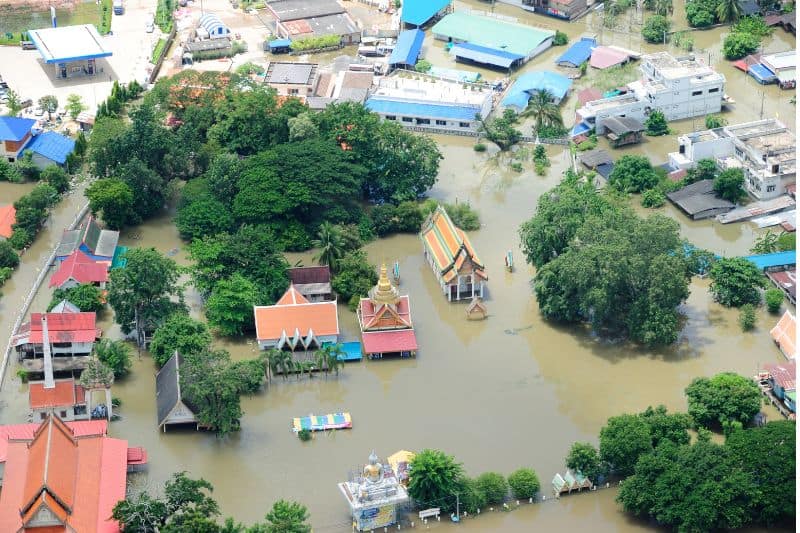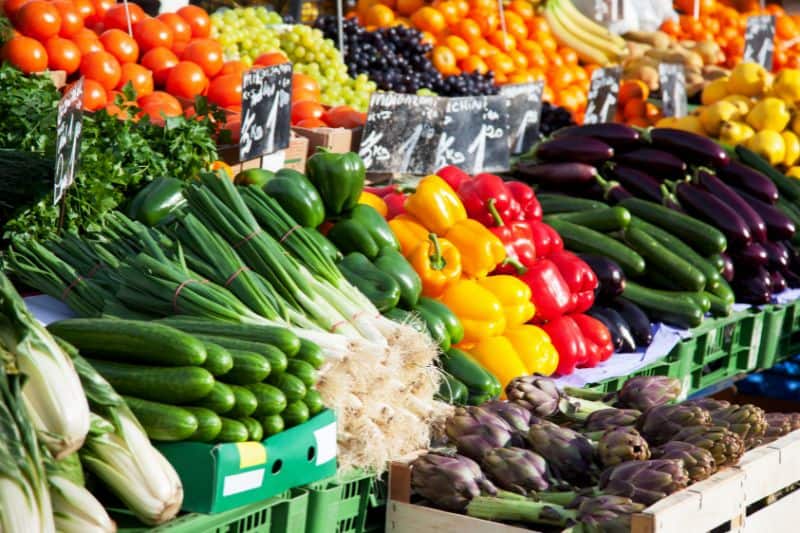Food insecurity has been defined as a lack of consistent access to enough food for an active and healthy life. In other words, millions of people worldwide suffer from a shortage of food and cannot tell if they will be able to feed themselves the next day or at the end of the day. This is the basis for defining food insecurity.
In 2018, for example, it was reported that 1 in 9 Americans suffered from food insecurity. That is equivalent to 37 million people, more than 11 million of whom are children. Hunger and food insecurity are closely related, and it is possible to say that when one is food insecure, one will be hungry.
Hunger may cause poverty and diseases, although not all people living below the poverty line experience food insecurity because those living above the poverty line could also experience food insecurity.
Food insecurity is a dangerous concept as it does not exist in isolation. Low-income families could be affected by multiple overlapping issues, such as;
- Social isolation
- Lack of affordable housing
- Acute and chronic health problems
- Low wages
- High medical costs
These factors could also result in food insecurity, making it a complex and dangerous state of life.
They are all social determinants of health, and when addressing effective responses to food insecurity, these overlapping challenges must be addressed. Below is an elaborate discussion of food insecurity’s causes, effects, and solutions.
Causes of Food Insecurity
The leading causes and drivers of food insecurity include;
1. Lack of Access to Farming Lands
Food is grown or produced from the land where income is also generated. However, many people do not have their land or cannot afford access to farmable land.
Land ownership strengthens agricultural productivity as it can be used to produce various food crops even at a small scale level. Lack of access to farming land means a lack of a key resource for producing food crops.
2. Land Grabbing
This is closely related to the above point. Land grabbing is when land, traditionally owned or farmed by families or groups, or communities, is taken away from them by large investors or influential government officials.
They acquire the land to expand their empires, extract natural resources, or even grow food for export.
Land grabbing deprives local communities of the resources they desperately require to grow food crops and vegetables for survival. The ultimate outcome is poverty and social instability, worsening food insecurity.
3. Conflict, Violence, and Wars
Conflicts, wars, and violence impact food production and supplies. Food insecurity is very high in most countries where civil war has been prevalent.
Examples are Somalia and South Sudan in Africa. A recent example is Syria’s agricultural production, which has been adversely affected by the conflict.
According to a report by FAO in October 2018, 5.5 million Syrians face food insecurity, partly due to the conflict. Conflict-related food shortages can also trigger years of food crises even if the fighting has ended.
4. Unfair Trade Rules
How large corporations do business with local food producers is largely unfair and does not reward farmers for the worth of their labor or produce.
Better-resourced farmers get food supply contracts, but small-scale farmers often work as laborers on contracted farms. Such practices contribute further to food insecurity for farmers that are not financially stable.
5. Fast-paced Population Growth
We live in a world where despite the rates of deaths, the birth rates are higher. This growing population means there are extra mouths to feed daily. The rise in population, with limited growth in the food available, means an increase in food insecurity.
6. Biofuels
Agrofuels are produced from plants like corn and sugar cane, such biofuels are emerging as a response to tackling climate change. Unfortunately, farms will be diverted into growing such plants and crops for biofuels, decreasing the number of grains available for food.
This also drives up the prices of such grains. The growing demand for biofuels is also responsible for the increase in deforestation in countries such as Malaysia and Indonesia, further threatening food security. This is because deforestation results in cleared lands and climate change, which causes flooding and adverse weather, thereby destroying crops.
7. Natural Disasters
Drought, floods, typhoons, cyclones, and other natural disasters can wipe out an entire harvest or destroy crops. This is devastating, especially to rural communities and families, who rely on such harvests and small-scale staple farming for daily food.

8. Climate Change
Changes in climatic patterns have fundamentally affected agriculture. Farmers are experiencing the effects of climate change, as rains are coming in earlier than before, and droughts are lasting longer.
Freshwater is also scarce due to rising sea levels, storm surges, cyclones, and other extreme weather events, which are more frequent and intensive.
9. Wastage of Food
1.3 billion tons of edible food is thrown away yearly, mostly in developed countries, and that’s about 1/3 of all food produced for human consumption.
For instance, during this Coronavirus pandemic, farmers were throwing away billions’ worth of food since restaurants and supermarkets, which had previously bought such food, were shut down.
The production levels are greater than the consumption, meaning food has to be thrown away, yet people are dying of hunger in developing nations. FAO reports that each year, the food wasted globally is about 1.3 billion tonnes.
10. Market Dominance by Corporate Giants
Giant multinational agribusinesses and exporters have flocked the food market, meaning small-scale farmers have limited avenues to market their produce.
They, therefore, sell at unfair prices, and the giant businesses control the market, including selling food at high prices by targeting customers who, most of the time, are over-selective, leading to food wastage.
11. The ‘Financialization’ of Food
Food has become a precious commodity and is being traded on international markets. Price hikes in international food markets trigger severe and prolonged food crises. Therefore, this means that, to a considerable degree, hunger, malnutrition, and food insecurity could result from market priorities and greed to achieve higher profits.
Effects of Food Insecurity
Food insecurity affects physical and mental health, also social and emotional well-being.
These effects include;
1. Effects on Children
Children who are food insecure or come from food insecure families are more likely to require hospitalization and are at a higher risk of chronic health conditions like anemia and asthma. They also have frequent oral health problems.
Food insecurity in children is also related to the poor physical quality of life and prevents them from fully engaging in daily school activities, as well as social interaction with their peers.
2. Food Insecurity Leads to Hunger
Hunger can also result from food insecurity. Hunger costs billions annually, with the US using about $178.9 billion yearly.
This makes the government spend more money on feeding the nation instead of concentrating on other projects such as infrastructure, healthcare, and education.
3. Increases in Food Prices
Food insecurity means there is a shortage of food commodities, making the available food expensive to purchase. This means the prices will increase, resulting in more expensive related items. People’s access to food, care, feeding, and healthcare may also become limited, making the nation more insecure.
4. Unemployment
The economy will slow down when a nation is insecure about food availability. This means more people will lose their jobs, wages will be lost, and losses in income will be prevalent.

5. A Rise in Health-related Costs
The higher the rate of food insecurity, the higher the risk of developing chronic illnesses such as heart disease. The burden is, therefore, placed on the healthcare system.
In a study, food-insecure households spent about $6,100 on medical care yearly compared to $4,200 for food-secure households, a 45% increase in costs.
6. Violent Conflict
Despite violence being a cause of food insecurity, the reverse is also true. Food insecurity, especially caused by a rise in food prices, is a threat and may result in violent conflict.
It might not be the only cause, but coupled with other factors, for example, in the political or economic spheres, food insecurity could be the factor that determines whether and when violent conflicts erupt.
Solutions to Food Insecurity
Food insecurity affects over 820 million people worldwide, and no region is exempted. Being a global challenge, governments and international institutions have employed all possible means to defeat it.
The United Nations, for instance, posed 17 Sustainable Development Goals, which ought to be achieved by 2030. Achieving food security, improved nutrition, ending hunger, and promoting sustainable agriculture is the second goal.
It, therefore, is up to every individual, family, group, organization, corporation, institution, and government to achieve food security before 2030. Not much has been done by most institutions and countries, but there are hopes for a food-secure future.
Here are some of the possible solutions to food insecurity.
1. Reduce Food Waste
Food is wasted mainly because of inefficient preparations, poor road structures, over-selective customers, and inadequate storage facilities. If storage facilities are improved, and there are adequate preparations on how food will be used, less food will be wasted, and there will be a more food-secure community.
As mentioned earlier, FAO reports that each year, the food wasted globally is about 1.3 billion tonnes.
2. Reduce the Risk of Commercialising
If food is grown for the purpose of feeding the community or nation, food insecurity levels will go down. Farmers can produce more food crops and, later on cash crops when there are enough food crops in the market.
There will be less risk of commercialization of food if it is sufficient in the market. Governments should also implement programs allowing farmers to know when there is sufficient food for everyone.
3. Improve Existing Infrastructural Programs
Some farmers fail to get their produce to the market because of poor infrastructure, roads, storage facilities, and food processing equipment. The food rotates in the farms rather than being taken to those who need it or for processing. If the infrastructure is improved, more food will be available in the market, and food insecurity levels can decrease.
4. Improve Trade Policies
Some farmers fail to feed the community because of unfair trade policies in the market. Corporate giants have stepped in and commercialized food, making it harder for small-scale farmers to have their products in the market. Governments should, therefore, improve such policies and make it fair for everyone to participate.
5. Promote Diversification
Focusing on a single food crop or staple can lead to terrible outcomes in cabbing food insecurity. To improve food security, there needs to be training on the importance of diversified and healthy diets for better nutrition.

Having varieties of food and an educated community on the importance of a diversified diet will ensure sufficient staple foods available in the markets.
6. Close the Yield Gap
Most of our farming lands are drained of their natural fertility levels and cannot produce as much as they did years ago.
To close the gap, governments and agricultural institutions have developed strategies and programs for improving crop yields, especially location-specific methods of sustainable agricultural intensification, such as soil management and land improvement.
Land conversion should be avoided as it encroaches into natural habitats and forests, affects biodiversity and wildlife, and increases GHG emissions. The strategy or program setup should ensure food is available for all and that wildlife and forests are unaffected.
7. Work Towards Defeating Climate Change
Climate change is severely affecting our lives and the production of food. If we fight climate change and farm sustainably, we will be able to ensure there is enough food for us and future generations. It is an additional step in fighting food insecurity.
References:
“UNDERSTAND FOOD INSECURITY”. (n.d.). Feeding America. Retrieved from https://hungerandhealth.feedingamerica.org/understand-food-insecurity/
Verchot, M. (2020). 5 Ways to Improve Global Food Security. Treehugger. Retrieved from https://www.treehugger.com/ways-improve-global-food-security-4858809






